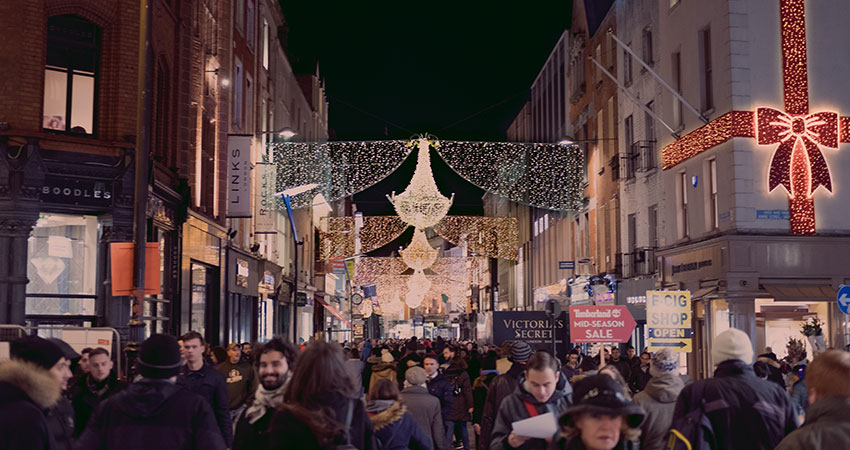Holiday retail sales saw shoppers thronging stores (photo credit: by Kevin Dowling on Unsplash)
Depending on who you believe, overall holiday retail sales in the U.S. increased between 6% and 8% which should cause retailers to do backflips, considering the state of the economy and inflation.
But the rate of ecommerce growth was slower, reversing a trend from past years, with online sales between Nov. 1 and Dec. 31 up 3.5%, according to data from Adobe Analytics, as the stores became the story. Still, this produced a record $211.7 billion in ecommerce sales; as Adam Sandler would say, “Not too shabby!”
“At a time when consumers were dealing with elevated prices in areas such as food, gas, and rent, holiday discounts were strong enough to sustain discretionary spending through the entire season,” said Vivek Pandya, lead analyst with Adobe Digital Insights, in a statement. “The big deals drew in consumers and drove volume, helping retailers who were challenged with oversupply issues, particularly in categories such as apparel, electronics and toys.”
Mobile commerce made up nearly half of orders, Adobe said, at 47%, up from 43% last year. Booming buy now pay later orders were up 4%, while BNPL revenue was down 2%, indicating smaller baskets. Curbside pickup was used in 21% of ecommerce holiday orders, down from 23% last year as some major retailers are dialing back the service to encourage more store visits; it did peak at 42% of orders on Dec. 22-23.
Cyber Weekend, from Thanksgiving through Cyber Monday, saw a record $35.3 billion in ecommerce sales, Adobe reported, but there was online strength throughout the season, with 38 days surpassed $3 billion in daily spend, similar to 2021. In 2020, by comparison, there were 25 such days.
Mastercard Spending Pulse pegged domestic holiday retail sales growth at 7.6%, unadjusted for inflation, between Nov. 1 and Dec. 24, compared to 6.73% from GlobalRetailData; the latter was ahead of average growth pre-pandemic. The National Retail Federation had projected growth between 6% and 8%, right in line with those two reports.
And all this despite some early December agida from the CEOs of Walmart and Nordstrom on consumer spending jitters.
Based on a relatively small sample size — okay, my own late-season holiday shopping in southern Connecticut malls — there was significant traffic on the roads, in the parking lots and prowling the levels and food courts as people hustled through stores for last-minute gifts. Perhaps they were bypassing purchases of $9 Lysol cans to fund their sprees.
My data-rich observation was backed up by the actual pros at Placer.ai, which tracks footfalls in stores across the country.
“The real retail peaks of Q4 2022 occurred in the weeks before Christmas, as shoppers stocked up on last-minute gifts ahead of the holiday,” said Shira Petrack, marketing content manager for Placer.ai in a blog post. “This shift towards a later-in-the-season retail visit peak was already observed in 2020 and 2021.”
While Placer.ai found retail traffic was up 35.7% during the final Christmas shopping week of Dec. 19, as compared to the week of Sept. 26, the company said it was down from 2021, when pent-up demand and pandemic-fueled assistance checks drove more footfalls. Given reported retail sales growth in the 6%-8% range, there was surely more spending per shopping trip and shopper this time round.
On a final personal note: Hat tip to UPS and an unnamed eBay seller for hitting the early end of an estimated Dec. 22-27 delivery window for one of our son’s presents. All of the big three parcel carriers did well in terms of on-time performance, it seems.

